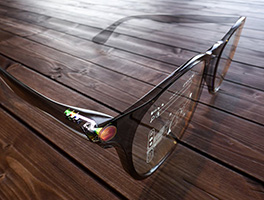
Laser beam scanning fuels augmented reality’s future – LiDAR News
Laser beam scanning fuels augmented reality’s future
Consumer technologies benefit as innovations coming from the photonics community find appropriate applications.
Augmented reality (AR), virtual reality (VR), extended reality (XR), and mixed reality (MR) have rapidly become buzzwords, leading to a lot of experimentation and excitement about future applications. While the technologies are often lumped together, it is important to note the clear distinctions in underlying technologies and use cases. Of the group, AR has the most realistic potential within the near future.
According to Eric Abbruzzese, research director with ABI Research (New York, NY), AR is best defined as any device with a screen that enables pass-through or glanceable digital content, which includes both mobile devices and smart glasses, and within smart glasses this includes mixed reality devices like Microsoft HoloLens and assisted reality devices like RealWear.
When considering AR, the enterprise market started stronger with worker enablement and high value use cases like remote assistance, training, and data capture (for example, real-time capture of audio, images, video, machine/environment data). “This has been true for both smart glasses and mobile devices, with mobile being the dominant device used for AR thanks to cost and ease of integration compared to glasses,” says Abbruzzese. “The smart glasses hardware market is getting more competitive, though, so falling prices and generally greater knowledge and comfort around smart glasses (in both consumer and enterprise spaces) will help spur adoption.”
Laser-driven evolution
Evolutions from within the photonics community are surfacing as key components as AR technology moves from trendy prototypes to mass production products. Consider, for instance, the potential when using laser beam scanning (LBS). LBS shows considerable advantages over other technologies (such as LCOS, DLP, LCD, and OLED) with respect to achievable form factor (size), power consumption, weight, brightness, and contrast.
Additionally, LBS only generates light and consumes power where information is needed. And, since earliest generations of AR smart glasses products mainly show icons and messages, LBS far outshines power-hungry spatial light modulator-based systems. As such, LBS is the key to enabling stylish smart glasses for real consumer AR products (see Fig. 1).
“LBS beats the µLED-based approaches in part because µLED is not capable of demonstrating a mass production-compatible manufacturing process that comes along with a suitably high yield,” says Dr. Ulrich Hofmann, founder and managing director of OQmented (Itzehoe, Germany). OQmented is a deep tech company developing and selling high-performance MEMS mirrors for ultracompact LBS displays and best-in-class 3D sensing solutions for mobile and stationary applications (see Fig. 2). In addition, the µLED concept seems to be more inefficient and power-hungry, so the smaller the pixels get—which seems to limit achievable resolution.
This content was originally published here.


